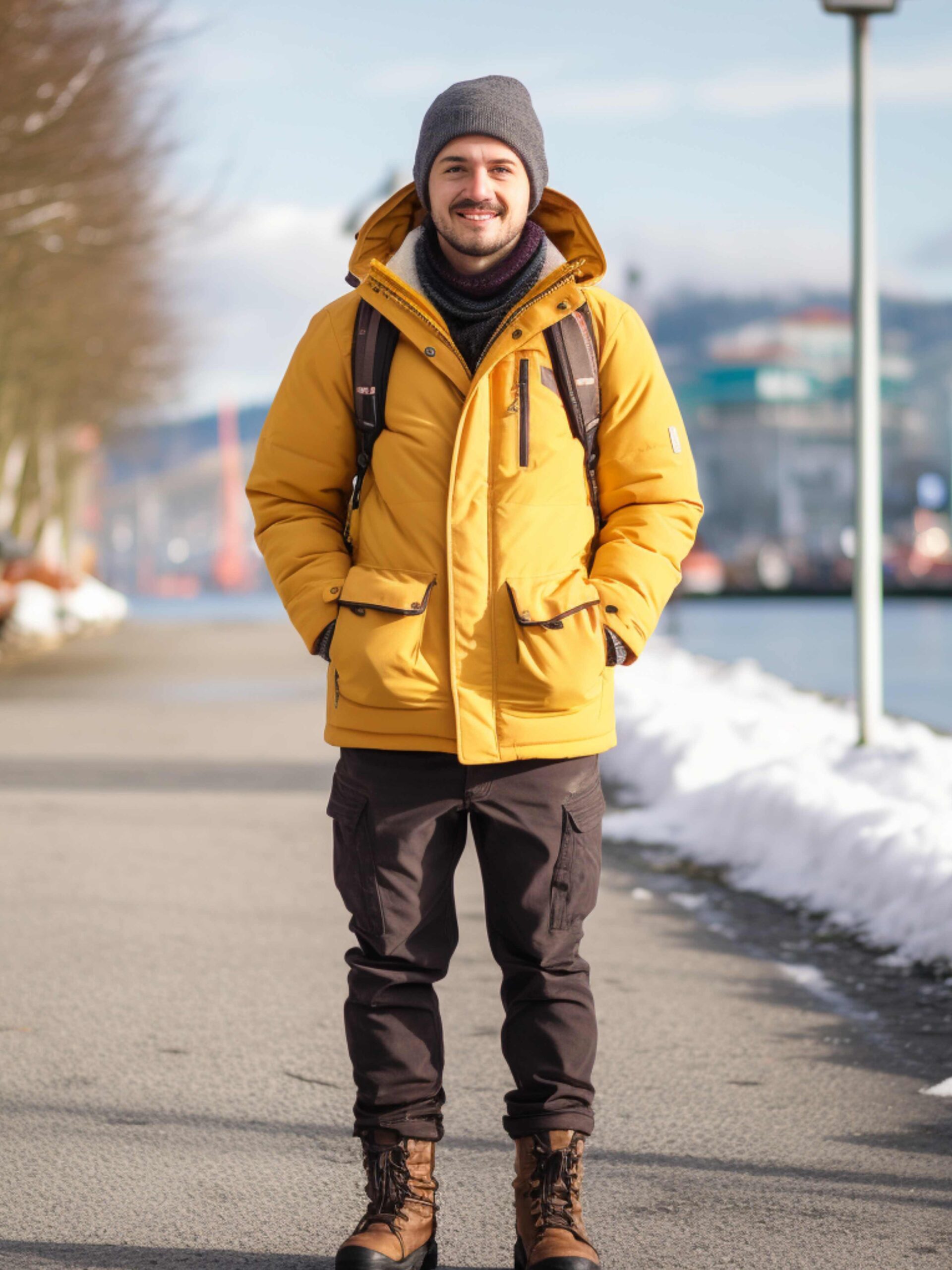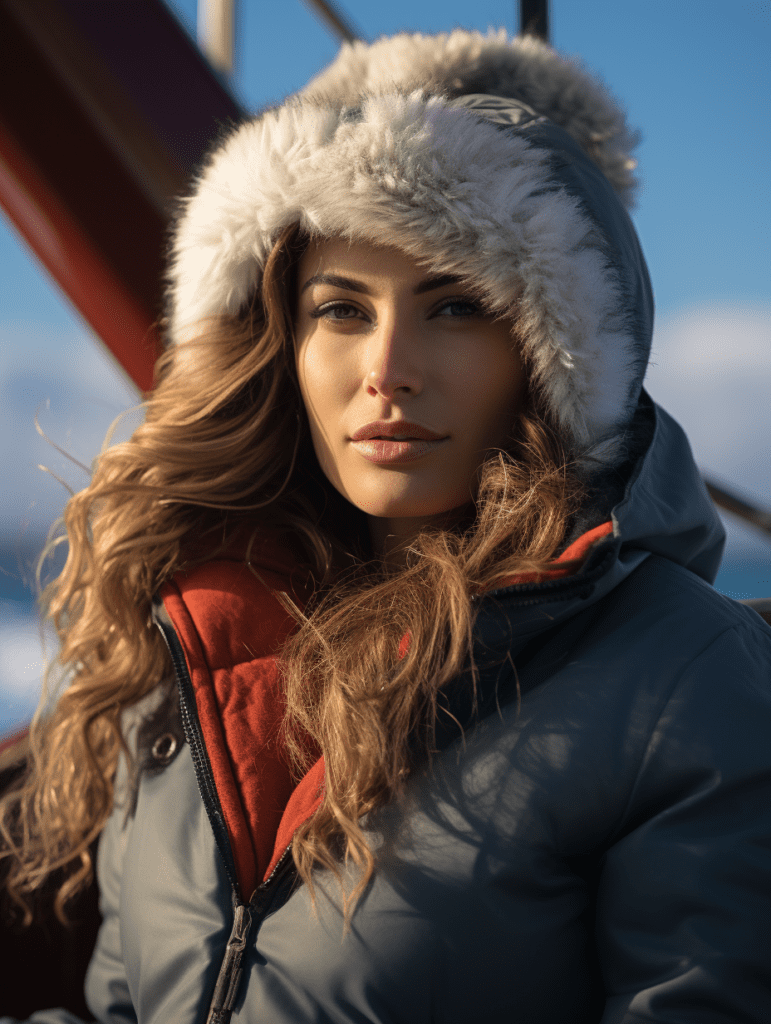Optimize Your Whale Watching Outfit for Comfort and Safety
Going on a whale watching tour can be an incredible experience. Getting the chance to see magnificent creatures like humpback whales, orcas, and dolphins in their natural habitats is a special privilege. However, the conditions out on the water can be quite harsh at times. Having the proper whale watching outfit is critical for maintaining comfort and safety during your tour.
This comprehensive guide will equip you with expert recommendations on what to wear whale watching. We’ll cover base layers, insulating mid layers, waterproof outerwear, footwear, accessories, fabric considerations, buying from specialty retailers, renting gear vs. DIY, pre-tour preparations, and dressing for a variety of weather conditions.
Base Layers – Wick Moisture, Retain Warmth
Your base layers sit directly against your skin and serve a key purpose – moisture wicking. The last thing you want is soggy, sweat-drenched clothing, making you cold and uncomfortable. That’s why top whale watching guides recommend base layers made of synthetic fabrics like polyester or nylon that wick moisture away from your skin and dry quickly. Merino wool is another great option, as it wicks moisture while retaining warmth exceptionally well.
When selecting base layers, prioritize snug-fitting tops and bottoms. You want your base layers contours to your body shape to effectively retain warmth in those vital organs and joints. Loose base layers allow more cold air to penetrate the insulation.
Here are some top-rated picks for whale watching base layers:
- Under Armour ColdGear – Polyester fabric with brushed interior
- Carhartt Force – Durable, stretchy, moisture control
- SmartWool Merino – Premium merino wool
Considerations by Climate & Region
- Cold climates – 100% merino wool or synthetic with brushed lining
- Warm climates – Lightweight merino wool or polyester
- Tropics – Breathable, sweat-wicking synthetics critical
Be prepared with GILL
Dive into the world of whale watching with GILL Marine’s top-notch gear. Designed for the sea. Waterproof. Comfortable. Stylish.






Mid Layers Provide Vital Insulation
While your base layers help regulate moisture and temperature directly against your skin, your mid layers provide critical insulation to retain body heat and keep your vital organs protected from the elements. This added layer of insulation helps trap heat when the wind picks up and temperatures drop.
For whale watching trips, three of the best mid layer options include:
Fleece Jackets: These polyester jackets provide plenty of stretch and warmth while allowing moisture to evaporate. Fleece also dries quickly if it gets wet. Go for a thicker 300-weight fleece for superior insulation.
Wool Sweaters: A merino wool sweater is naturally moisture-wicking, breathable, and antimicrobial. Wool retains warmth exceptionally well, even when damp. Choose a wool knit like Fair Isle that traps air pockets.
Insulated Jackets: Jackets with down, PrimaLoft, or synthetic fill provide outstanding warmth for their weight. They compress down for easy packing, too. Just beware of overheating when active.
Some top pick mid layers:
- Patagonia R1 Fleece Pullover – Durable, breathable, quick-drying
- SmartWool Intraknit Merino Sweater – Naturally moisture-wicking wool
- Arc’teryx Atom LT Hoody – Lightweight synthetic insulation
Pro Tip:** Layer Multiple Mid Layers**
When heading out for colder whale watching tours, follow the “3 Layer System” – wear multiple mid layers depending on conditions for superior insulation:
- Wicking base layer
- Lightweight fleece sweater
- Heavyweight fleece jacket
Adding layers allows you to adjust your warmth and moisture control as conditions dictate.
Waterproof-Breathable Outer Shell
Now, to protect all those carefully selected base layers and mid layers we’ve assembled – it’s time to add the vital protective outer shell to shield you from the elements.
When out on the ocean searching for whales, expect to encounter wind, spray, rain, and potentially even waves crashing on board. A waterproof and breathable outer layer will prevent all that moisture from saturating your inner layers and cooling your body temperature.
The best fabrics for whale watching outerwear combine waterproof protection and breathable comfort:
Hardshell Jackets: Constructed using advanced waterproof-breathable fabrics like three-layer Gore-Tex Pro, eVent, or proprietary equivalents. They offer top-tier moisture protection alongside breathability. Hardshells do run pricey, given the technical materials.
Softshell Jackets: Also waterproof-breathable, but stretchier, lighter, and more breathable than hardshells. They rely on tightly woven face fabrics matched with a waterproof-breathable membrane instead of a separate protective layer.
When it comes to “waterproof” rain pants, opt for thick Grundens bib pants designed specifically for commercial fishing and sailing. Their adjustable suspenders ensure the right fit over layers and provide superior water protection compared to standard rain pants.
Be prepared with Columbia
Embrace the ocean’s splendor with Columbia Sportswear. Stay warm, dry, and in style with Columbia – where adventure meets the sea.






Recommended Outer Shell Jackets
- Arc’teryx Alpha AR – Premium GoreTex hardshell
- Outdoor Research Horizon – Lightweight, breathable softshell
- Helly Hansen Seven J – Durable protection, value-priced
Match Layers to Conditions
Colder temps, wind, and heavy rain call for hardshell jackets and bib pants. Warmer weather or lighter precipitation can warrant softshell jackets and rain pants. Adjust your protective outerwear depending on the forecasted conditions.
Dial in Warm Headwear and Handwear
With wind, ocean spray, and potentially rain bearing down on whale watchers, protecting those vulnerable extremities is vital. Warm, waterproof hats, hoods, and gloves will shield your head and hands from the elements.
Shield Your Melon
A warm hat that covers your ears and forehead is a whale watching essential. Breathable wool beanies make excellent options, as merino wool stays warm even when wet. For rainy outings, upgrade to a helmet-style rain hat or a waterproof storm hood built into your jacket.
Guard Your Paws
Exposure to cold, wind, and moisture can rapidly lead to hand fatigue and reduced dexterity. So secure a pair of heavily insulated, waterproof gloves or mittens to shield your hands. Look for models with wrist cinches and removable liners for adjusting warmth. Glove liners worn under a shell mitten offer exceptional warmth during periods of inactivity.
Sturdy Footwear Anchors Your Whale Watching Outfit
All the technical layers and waterproof fabrics on your upper half won’t mean much if your footwear fails. Whale watching boats have wet, slippery decks awash in ocean spray – precarious settings for flimsy sandals or street shoes. Instead, anchor your outfit with grippy waterproof boots to navigate safely.
Hiking-style waterproof boots work exceptionally well for daily whale watching tours. But for extended outings or extreme conditions, opt for full-on rubber boots from sailing brands like Grundens, Xtratuf, or Baffin. Prioritize models with aggressive tread for maximum traction on wet surfaces underfoot.
Break boots in beforehand by wearing on shorter trips. This allows the uppers and soles to flex properly for comfort during extended periods standing on your feet scanning for spouts.
Recommended Boots:
- Keen Durand Mid WP – Waterproof leather hiking boot
- Baffin Pro Hunter – Extreme cold-weather rubber boot
- Muck Arctic Pro – Neoprene boot for sub-zero temps
Accessories & Gear for Optimal Whale Watching
Aside from the obvious need for essentials like sunscreen, snacks, and water, a few key accessories can enhance comfort, safety, and even wildlife viewing during your tour.
Sunglasses – Polarized models cut sun glare off the water for clearer whale spotting.
Seasickness remedies – Motion sickness wristbands, over-the-counter meds, and ginger candies prevent nausea.
Binoculars – Spot whales and identify sea bird species at a distance. Select models that float if dropped overboard.
Camera – Capture incredible whale photography. Look for waterproof models or keep the camera in a dry bag when not shooting. Consider lens extenders for magnified shots.
Phone protection – Keep devices safe and accessible in waterproof phone pouches with lanyards.
Lip balm and lotion – Shield skin from chapping winds and sun exposure.
Thermos – Fill with coffee, tea, or hot cocoa to warm up from the inside.
Be prepared with icebreaker
Lightweight, breathable, and odor-resistant, our clothing keeps you comfortable and connected to nature. Join the pod with Icebreaker – where comfort meets the ocean.






Source Outfits from Whale Watching Specialists
Beyond mainstream outdoor brands, a selection of technical clothing companies specializes specifically in gear for marine sports like whale watching. Their tailored product lines and vast experience equip them to deliver optimal whale watching outfits:
Premier Whale Watching Outfitters:
- Grundens – Commercial fishing and sailing gear
- Helly Hansen – Premium waterproof foul weather gear
- Musto – High-end UK sailing brand
- Henri Lloyd – Technical apparel for yachting
- Gill – Innovative designs for marine racing
This specialized gear from marine-focused brands generally surpasses mainstream outdoor clothing in durability, breathability, waterproofing, and stretch. Yes, the price tags run higher, but serious whale watchers praise the performance benefits and long lifespan of investing in quality pieces.
Rent Outfits vs. Buying Your Own Gear
When prepping your whale watching outfit, you face the choice between renting items or buying pieces to assemble your own kit. Depending on your budget, plans for future outings, group size, and other factors, renting or buying each has advantages.
Rental Outfit Pros
- Avoid expensive purchases for one-time tours
- Gain access to expensive technical gear
- Try out different items and brands
- Simple logistics
Rental Outfit Cons
- Limited availability for specific items and sizes
- Used items with questionable hygiene
- Often charge full price even if gear fails
Conversely, buying your own whale watching outfit allows you to personally select each layer, break them in on shorter trips, and care for the fabrics and materials fully under your control. But the upfront costs run high for technical, waterproof, breathable gear.
When renting, always personally inspect lifejackets, waterproof outerwear, and footwear for defects beforehand. And review rental agency damage policies in case issues emerge on tour.
Pre-Tour Preparations
Simply buying a snazzy whale-watching outfit isn’t enough. To maximize performance and comfort out on open water with whales, some key preparations help optimize new gear:
Test mobility and range of motion – Zip up layers, move arms in circles, squat down, and walk around to detect any restrictions or pulling. Adjust fit accordingly.
Waterproof outer layers – Use wash-in treatments like Nikwax TX Direct or Granger’s products for jackets and bib pants without factory DWR coatings. Restore beading effect and moisture protection.
Wash base and mid layers – Launder to remove factory chemicals or residual dirt/oils. Wash in tech-specific detergent to preserve wicking properties and flame retardant treatments.
Break-in footwear – Wear new boots and shoes on shorter walks to allow proper flexing and prevent blisters before longer voyages.
These pro tips ensure your whale watching clothes and shoes perform optimally on tour rather than distract you with poor mobility, leakage, odors, or painful break-in periods out on the waves.
Choosing the Best Fabrics & Materials
When selecting fabrics and materials for your whale watching layers, focus first on performance characteristics that retain warmth despite moisture and dry quickly if wet.
Technical fabrics and performance materials transform a mundane ensemble into a fine-tuned whale watching outfit. Select materials excel at moisture regulation, breathability, stretch, and weather protection:
Key characteristics to prioritize by layer:
When reviewing fabric specs, analyze waterproof ratings (15K is good, 20K+ outstanding) and breathability ratings in grams/meters squared. Higher numbers indicate better vapor transmission and temperature regulation.
Prioritize fabrics designed for marine sports over general outdoor gear. Sailing, sea fishing, and paddling items endure consistent ocean spray, wind, and humidity – ideal for whale watching!
Natural Fabrics vs. Synthetics
Both natural fibers like merino wool and synthetic fabrics have advantages for whale watching:
Merino Wool
- Naturally moisture wicking
- Antimicrobial – resists odors
- Retains insulating properties when wet
Synthetic Fabrics
- Very quick drying time
- Durable construction
- Easy care
Determine your preferences for odor resistance, warmth, and drying time. Then, choose wool base layers or synthetic mid-layers aligned with your priorities. Using both natural and synthetic fabrics across layers also balances attributes.
Durability & Care Considerations
The marine conditions encountered on whale watching trips can be rough on clothing. Look for abrasion-resistant face fabrics on jackets, reinforced knee patches on rain bibs, and leather or synthetic uppers on boots.
Washing gear after salty, humid outings preserves water resistance treatments and maintains structural integrity across years of wear. Wash synthetic base and mid-layers in technical detergents without fabric softeners. Use tech washes like Nikwax TX Direct on hardshells and softshells to revitalize DWR coatings without damaging breathable membranes beneath.
Preparing Your Whale-Watching Outfit
Carefully preparing a new whale watching kit ensures optimal comfort, safety, and enjoyment while out on the waves scanning for whales and dolphins:
Try On All Layers. Zip up jackets, raise arms over your head, and crouch down as if steadying yourself on a boat. Make sure the range of motion isn’t restricted before purchasing.
Waterproof Outer Shell. Use DWR reviving sprays and washes to maintain the water-beading effect and moisture protection of jackets, bibs, and rain pants.
Break-In Boots & Shoes. Wear new kicks on shorter walks before extended time on feet during tours to allow proper flexibility and prevent blisters.
Adjusting Outfits by Weather & Conditions
Unlike indoor environments with climate controls, whale watching tours see participants exposed to ever-changing weather. As a cold front blows in or rain squall passes, temperatures fluctuate, precipitation varies, and winds shift. Employ the “layering system” to tailor your outfit in response.
Pack extra mid-layers and base layer sets. Then, adding or shedding pieces lets you dynamically react to conditions:
Cold, windy – Wear multiple insulating mid-layers under the shell jacket
Warm, sunny – Light baselayer with thin fleece pullover
Overcast and raining – Waterproof outer shell with lightweight mid layer
Customizing your whale watching outfit as conditions change ensures you avoid overheating or getting chilled. Follow the experienced crew members’ lead, adding and subtracting core layers in response.
Having backup base layer sets is key if your first gets soaked with ocean spray. Peel off damp layers, stow in dry bag, and change into fresh, dry alternatives to regain comfort. Don’t underestimate the morale boost dry clothing provides out on the water!
Conclusion
When venturing out on the ocean searching for humpbacks, orcas, and other marine mammals, a dialed whale watching outfit enhances comfort, safety, and even your wildlife viewing experience. Use this definitive guide to select optimal layers and materials from head to toe.
Take advantage of the knowledge that specialist whale watching outfitters bring while considering cost-saving rentals. Break gear in beforehand to maximize comfort once aboard vessels bound for wildlife sightings.
Most importantly, embrace the “layering system” philosophy. Carry extra core layers and mix-and-match pieces in response to variable offshore conditions. Staying dry and regulating warmth unlocks the most epic whale watching adventures!







